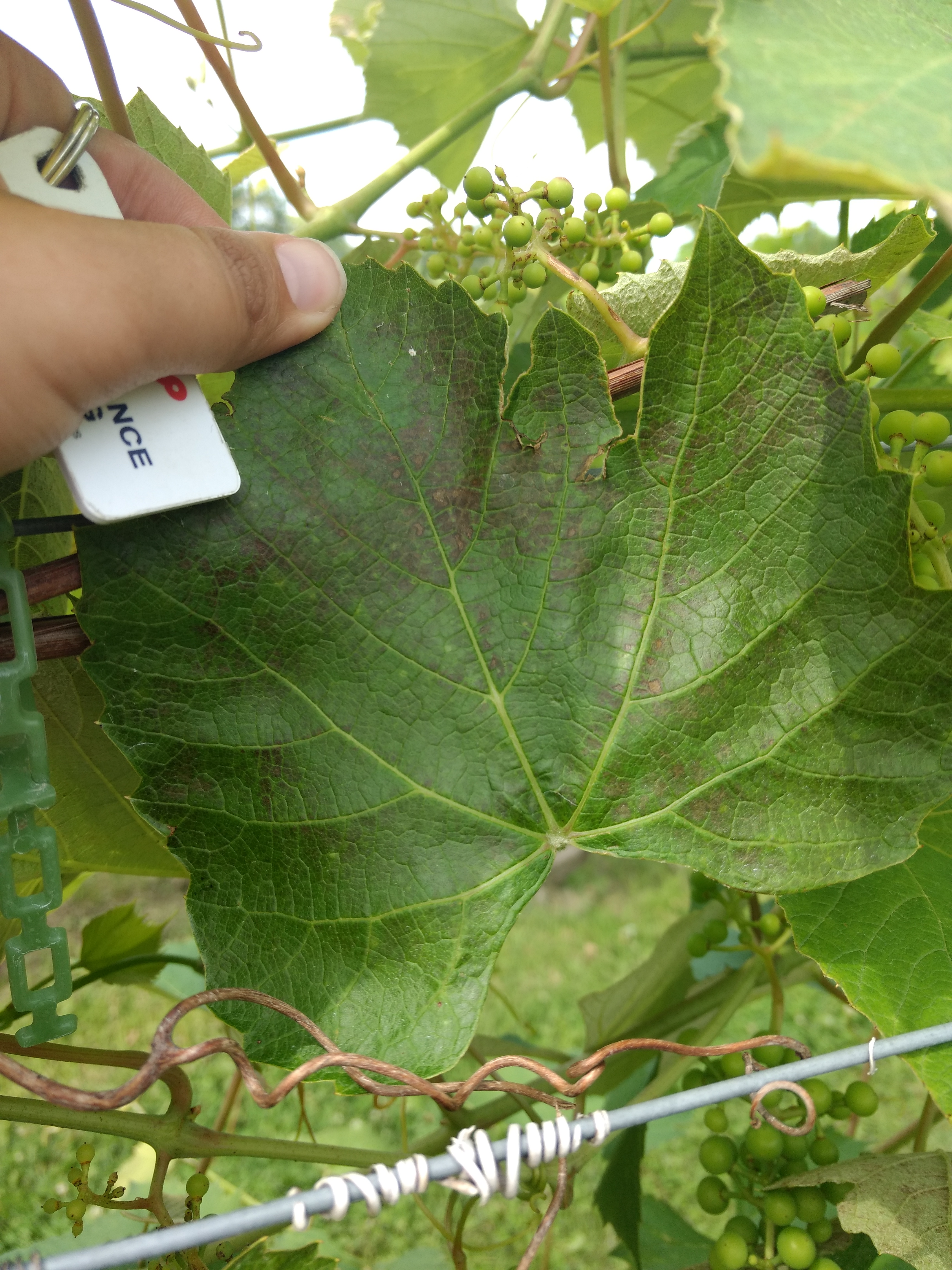Annie Klodd, Extension Educator – Fruit and Vegetable Production
When growers spot issues in their vines, the cause of the problem is not always obvious. But knowing the cause is the first step in resolving it – so what should you do?
Did you know that the University of Minnesota has a Plant Disease Clinic that can help you diagnose diseases in your vineyard? The Plant Disease Clinic, staffed by expert plant pathologists, analyzes samples submitted by growers in order to identify suspected problems.
Sending a sample in for expert diagnosis can save growers significant money by making sure they are applying the appropriate treatments to their vines, and identifying problems before they get too severe and expensive to treat.
How Does This Work?
When PDC pathologists receive a sample from a grower, they have multiple tricks up their sleeve to nail down the problem. They not only look at the visible symptoms on the sample, but they can also use microscopic analysis, tissue culture, nematode testing, virus testing, and DNA and RNA-based analyses as needed to reach the diagnosis.
Many of the more common diseases can be identified with the “routine diagnosis,” which includes traditional symptom analysis, microscopic examination and serological tests when applicable. For more difficult samples, the clinic may recommend they move forward with the additional testing techniques above, as appropriate. Fees differ according to the complexity of the tests performed.
Submitting a Sample
The quality of the sample you submit plays a big part in how successful the diagnosis will be. Here are several tips to getting the most out of your sample submission:
- Your sample to the plant disease clinic must include living tissue where the symptoms of the infection are currently appearing.
- In addition, include adjacent healthy tissue for comparison. For example: If you are experiencing cluster dieback every year, submit the cluster while it is currently demonstrating necrosis, along with adjacent stem, leaves, and ideally a couple of nearby clusters as well.
- If you suspect that you may have a trunk disease, such as Botryosphaeria that we have been discussing, the PDC may need to culture the tissue to isolate the disease. However, woody tissue can be more challenging to isolate fungal disease spores from. Be sure to send in living tissue where you can clearly see the symptoms. You can submit multiple pieces, as well.
- Pack the sample into a plastic bag, not paper. The sample will dry out in a paper bag and make diagnosis difficult.
- Mail the bagged sample in a shipping box, and include this form.
- On the submission form, the more information you can write about the problem, infection tendencies, vineyard site and history, past diseases and management, and your current management program, the better.
- If you suspect certain diseases based on history or conversations with Extension, it is a good idea to list that on the form in the "Problem” box so the lab can look for them.
- If you are not sure which tests to request, please contact the PDC first, to make sure you are ordering the most appropriate analysis for your situation.
To ship the sample in a box, include the sample in a plastic bag, the completed form, and a check for the analysis fee. The routine analysis is $45. Tissue culture can be added onto the routine analysis for an extra $14, but tissue culture is not always necessary for diagnosis. Refer to the PDC website for more information on services, sample submission, and fees: https://pdc.umn.edu.
The mailing address for the Plant Disease Clinic is as follows:
Plant Disease Clinic
Department of Plant Pathology
495 Borlaug Hall
1991 Upper Buford Circle
St. Paul, MN 55108
You can reach the PDC with questions at [email protected].
